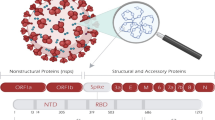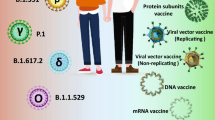Abstract
Most wild strains of Japanese encephalitis virus (JEV) produce NS1’ protein, which plays an important role in viral infection and immune escape. The G66A nucleotide mutation in NS2A gene of the wild strain SA14 prevented the ribosomal frameshift that prevented the production of NS1’ protein, thus reduced the virulence. In this study, the 66th nucleotide of the NS2A gene of SA14 was mutated into A, U or C, respectively. Both the G66U and G66C mutations cause the E22D mutation of the NS2A protein. Subsequently, the expression of NS1’ protein, plaque size, replication ability, and virulence to mice of the three mutant strains were examined. The results showed that the three mutant viruses could not express NS1’ protein, and their proliferation ability in nerve cells and virulence to mice were significantly reduced. In addition, the SA14(G66C) was less virulent than the other two mutated viruses. Our results indicate that only when G is the 66th nucleotide of NS2A, the JEV can produce NS1’ protein, which affects the virulence.





Similar content being viewed by others
Data availability
The authors confirm that the data supporting the findings of this study are available within the article.
References
van Leur SW, Heunis T, Munnur D, Sanyal S (2021) Pathogenesis and virulence of flavivirus infections. Virulence 12(1):2814–2838. https://doi.org/10.1080/21505594.2021.1996059
Filgueira L, Lannes N (2019) Review of emerging japanese encephalitis virus: new aspects and concepts about entry into the brain and inter-cellular spreading. Pathogens (Basel, Switzerland) 8(3):111. https://doi.org/10.3390/pathogens8030111
Campbell GL, Hills SL, Fischer M, Jacobson JA, Hoke CH, Hombach JM, Marfin AA, Solomon T, Tsai TF, Tsu VD, Ginsburg AS (2011) Estimated global incidence of Japanese encephalitis: a systematic review. Bull World Health Organ 89(10):766-774E. https://doi.org/10.2471/BLT.10.085233
Rastogi M, Sharma N, Singh SK (2016) Flavivirus NS1: a multifaceted enigmatic viral protein. Virology journal 13:131. https://doi.org/10.1186/s12985-016-0590-7
Akey DL, Brown WC, Jose J, Kuhn RJ, Smith JL (2015) Structure-guided insights on the role of NS1 in flavivirus infection. BioEssays 37(5):489–494. https://doi.org/10.1002/bies.201400182
Li Y, Counor D, Lu P, Duong V, Yu Y, Deubel V (2012) Protective immunity to Japanese encephalitis virus associated with anti-NS1 antibodies in a mouse model. Virol J 9:135. https://doi.org/10.1186/1743-422X-9-135
Firth AE, Atkins JF (2009) A conserved predicted pseudoknot in the NS2A-encoding sequence of West Nile and Japanese encephalitis flaviviruses suggests NS1’ may derive from ribosomal frameshifting. Virol J 6:14. https://doi.org/10.1186/1743-422X-6-14
Zhou D, Li Q, Jia F, Zhang L, Wan S, Li Y, Song Y, Chen H, Cao S, Ye J (2020) The Japanese encephalitis virus NS1’ protein inhibits type I IFN production by targeting MAVS. J Immunol (Baltimore, Md.: 1950) 204(5):1287–1298. https://doi.org/10.4049/jimmunol.1900946
Melian EB, Hinzman E, Nagasaki T, Firth AE, Wills NM, Nouwens AS, Blitvich BJ, Leung J, Funk A, Atkins JF, Hall R, Khromykh AA (2010) NS1’ of flaviviruses in the Japanese encephalitis virus serogroup is a product of ribosomal frameshifting and plays a role in viral neuroinvasiveness. J Virol 84(3):1641–1647. https://doi.org/10.1128/JVI.01979-09
Blitvich BJ, Scanlon D, Shiell BJ, Mackenzie JS, Hall RA (1999) Identification and analysis of truncated and elongated species of the flavivirus NS1 protein. Virus Res 60(1):67–79. https://doi.org/10.1016/s0168-1702(99)00003-9
Ye Q, Li XF, Zhao H, Li SH, Deng YQ, Cao RY, Song KY, Wang HJ, Hua RH, Yu YX, Zhou X, Qin ED, Qin CF (2012) A single nucleotide mutation in NS2A of Japanese encephalitis-live vaccine virus (SA14-14-2) ablates NS1’ formation and contributes to attenuation. J Gen Virol 93(Pt 9):1959–1964. https://doi.org/10.1099/vir.0.043844-0
Caliskan N, Peske F, Rodnina MV (2015) Changed in translation: mRNA recoding by -1 programmed ribosomal frameshifting. Trends Biochem Sci 40(5):265–274. https://doi.org/10.1016/j.tibs.2015.03.006
Zhou D, Jia F, Li Q, Zhang L, Chen Z, Zhao Z, Cui M, Song Y, Chen H, Cao S, Ye J (2018) Japanese encephalitis virus NS1’ protein antagonizes interferon beta production. Virologica Sinica 33(6):515–523. https://doi.org/10.1007/s12250-018-0067-5
Jordan-Paiz A, Nevot M, Lamkiewicz K, Lataretu M, Franco S, Marz M, Martinez MA (2020) HIV-1 lethality and loss of Env protein expression induced by single synonymous substitutions in the virus genome intronic-splicing silencer. J Virol 94(21):e01108-e1120. https://doi.org/10.1128/JVI.01108-20
Takamatsu Y, Raekiansyah M, Morita K, Hayasaka D (2015) NS1’ Protein expression in the JaOArS982 strain of japanese encephalitis virus does not enhance virulence in mice. Trop Med Health 43(4):233–237. https://doi.org/10.2149/tmh.2015-27
Yang J, Yang H, Li Z, Wang W, Lin H, Liu L, Ni Q, Liu X, Zeng X, Wu Y, Li Y (2017) Envelope protein mutations L107F and E138K Are important for neurovirulence attenuation for japanese encephalitis virus SA14-14-2 strain. Viruses 9(1):20. https://doi.org/10.3390/v9010020
Zhou Y, Wu R, Zhao Q, Chang YF, Wen X, Feng Y, Huang X, Wen Y, Yan Q, Huang Y, Ma X, Han X, Cao S (2018) Mutation of I176R in the E coding region weakens Japanese encephalitis virus neurovirulence, but not its growth rate in BHK-21 cells. Adv Virol 163(5):1351–1355. https://doi.org/10.1007/s00705-018-3765-2
Yang H, Fan F, Liu L, Liu J, Sun Y, Xie A, Shi X, Liu L, Yu Y, Li Y, Ge Y, Zeng X, Yang H (2020) A novel amino acid site closely associated with the neurovirulence of live, attenuated Japanese encephalitis vaccine (SA14-14-2 strain). Vaccine 38(11):2636–2642. https://doi.org/10.1016/j.vaccine.2020.01.005
de Wispelaere M, Khou C, Frenkiel MP, Desprès P, Pardigon N (2015) A single amino acid substitution in the M protein attenuates Japanese encephalitis virus in mammalian hosts. J Virol 90(5):2676–2689. https://doi.org/10.1128/JVI.01176-15
Roy U (2020) Structural and molecular analyses of functional epitopes and escape mutants in Japanese encephalitis virus envelope protein domain III. Immunol Res 68(2):81–89. https://doi.org/10.1007/s12026-020-09130-y
Roy U (2022) Host-virus interactions in Japanese encephalitis virus. Zoonotic Diseases 2(3):117–125. https://doi.org/10.3390/zoonoticdis2030012
Funding
This work was supported by the Research fund of North Sichuan Medical College (No. CBY22-ZDA06).
Author information
Authors and Affiliations
Contributions
LY and NT designed the study, analyzed the data and wrote the manuscript. CC, YR and RH cultured viruses, collected and tested the samples and analyzed the data. ZZ, KX and XY carried out the animal experiment. JY and LY reviewed and edited the manuscript. All authors approved the final manuscript.
Corresponding author
Ethics declarations
Conflicts of interest
The authors declared that they have no conflicts of interest to this work.
Ethical approval
All procedures performed in this study involving animals were approved by the Institutional Animal Care and Use Committee of North Sichuan Medical College (approval number AE2022-068), Nanchong city, China and followed National Institutes of Health guidelines.
Additional information
Edited by Sassan Asgari.
Publisher's Note
Springer Nature remains neutral with regard to jurisdictional claims in published maps and institutional affiliations.
Rights and permissions
Springer Nature or its licensor (e.g. a society or other partner) holds exclusive rights to this article under a publishing agreement with the author(s) or other rightsholder(s); author self-archiving of the accepted manuscript version of this article is solely governed by the terms of such publishing agreement and applicable law.
About this article
Cite this article
Tan, N., Chen, C., Ren, Y. et al. Nucleotide at position 66 of NS2A in Japanese encephalitis virus is associated with the virulence and proliferation of virus. Virus Genes 60, 9–17 (2024). https://doi.org/10.1007/s11262-023-02036-5
Received:
Accepted:
Published:
Issue Date:
DOI: https://doi.org/10.1007/s11262-023-02036-5




